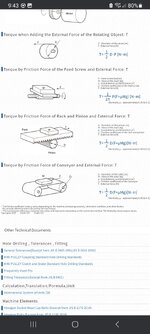Hi,
I've a motor connected to a pinion and rail system. The rail moves horizontally and slowly (1 mm/minute). I want to connect the rail to a vertical cylindrical cam so that the cam completes one cycle up and down (a distant of 20 cm) in every step of the rail. Is there any graphical explanation to this system? How to make such a system? What equation controls speed of motor, gear size?
I've a motor connected to a pinion and rail system. The rail moves horizontally and slowly (1 mm/minute). I want to connect the rail to a vertical cylindrical cam so that the cam completes one cycle up and down (a distant of 20 cm) in every step of the rail. Is there any graphical explanation to this system? How to make such a system? What equation controls speed of motor, gear size?

